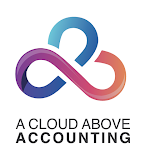As a small business owner, you know that keeping track of finances is essential. However, understanding bookkeeping terminology can often be confusing. This guide breaks down essential bookkeeping terms in clear, straightforward language, making it easier for you to grasp the basics of financial management and make informed decisions for your business.

Core Bookkeeping Terms For Small Business Owners
1. Assets
Assets are what your business owns and are expected to provide future economic benefits. They’re divided into:
- Current Assets: Items like cash, inventory, and accounts receivable that you expect to convert to cash within a year.
- Fixed Assets: Long-term resources, such as land, buildings, and equipment, used over several years.
Example: The computer and furniture in your office are fixed assets, while cash in the bank is a current asset.
2. Liabilities
Liabilities are what your business owes to others. Liabilities can be:
- Current Liabilities: Short-term obligations due within a year, like accounts payable.
- Long-Term Liabilities: Debts due over a period longer than one year, such as loans.
Example: Money owed to suppliers is a current liability, while a loan for equipment payable over several years is a long-term liability.
3. Equity
Equity represents the owner’s share of the business after all liabilities have been deducted from assets. It’s also known as owner’s equity or shareholder’s equity.
Example: If your business assets are worth $150,000 and your liabilities are $50,000, your equity is $100,000.
4. Revenue
Revenue is the total income generated from selling products or services before deducting any expenses.
Example: If you own a landscaping business, the income earned from providing lawn care and gardening services is your revenue.
5. Expenses
Expenses are the costs your business incurs in order to operate and generate revenue. They include rent, utilities, and payroll.
Example: Monthly rent for your storefront and salaries paid to employees are considered business expenses.
6. Cash Flow
Cash Flow is the net amount of cash coming in and going out of your business over a period. Positive cash flow means more cash is coming in than going out, essential for covering expenses and reinvesting.
Example: If you receive $5,000 from sales but pay $3,000 in expenses, your cash flow for the period is $2,000.
7. Accounts Receivable
Accounts Receivable (AR) is money owed to your business by customers who have received goods or services but have not yet paid.
Example: If you provide consulting services and send an invoice to a client for payment within 30 days, that amount is recorded as accounts receivable.
8. Accounts Payable
Accounts Payable (AP) is the amount your business owes to suppliers or vendors for products or services received.
Example: If you purchase inventory on credit and agree to pay the supplier within 30 days, that amount is recorded as accounts payable.
9. General Ledger
The General Ledger is the main accounting record for a company, summarizing all financial transactions.
Example: Entries like sales revenue, office supplies purchases, and payroll expenses are recorded in the general ledger.
10. Trial Balance
A Trial Balance is a report that lists the balances of all ledger accounts and ensures that debits equal credits. It’s a tool for verifying that accounts are balanced.
Example: At month-end, your accountant prepares a trial balance to confirm that all entries are correct.
11. Debit and Credit
Debit and Credit entries are the two main sides in double-entry bookkeeping:
- Debit entries increase assets and expenses.
- Credit entries increase liabilities, equity, and revenue.
Example: When you make a sale, you credit revenue and debit cash or accounts receivable.
12. Accruals
Accruals represent revenues earned or expenses incurred that haven’t been recorded yet. This method aligns income and expenses to the period in which they occur.
Example: If you perform a service in December but don’t receive payment until January, the revenue is recorded in December.
13. Depreciation
Depreciation allocates the cost of a fixed asset over its useful life, reducing its book value each year.
Example: If you buy a $10,000 vehicle with a useful life of 5 years, you could depreciate $2,000 per year.
14. Retained Earnings
Retained Earnings are the cumulative net earnings retained in the business instead of being distributed to shareholders.
Example: Profits from the past three years kept within the company for growth are retained earnings.
15. Bad Debts
Bad Debts are amounts owed to your business that you don’t expect to collect, often written off as a loss.
Example: If a customer cannot pay an outstanding invoice, that amount becomes a bad debt.
16. Credit Note
A Credit Note is issued to a customer to correct or reverse part or all of an invoice, usually due to returns or billing errors.
Example: If a customer returns damaged goods, you issue a credit note to adjust the total due.
17. Chart of Accounts
The Chart of Accounts (COA) is a list of all accounts used in the general ledger to organize financial information.
Example: The COA includes accounts like “Rent Expense,” “Revenue,” and “Accounts Payable.”
18. Inventory
Inventory is the stock of goods held by your business for the purpose of resale.
Example: A clothing store’s unsold items are inventory until they’re sold to customers.
19. Payroll
Payroll refers to the total wages and benefits paid to employees. It’s often a large expense for businesses.
Example: Monthly salary, bonuses, and benefits for employees make up your payroll.
20. Fiscal Year
The Fiscal Year is a 12-month period used for accounting purposes, which doesn’t have to align with the calendar year.
Example: If your fiscal year starts on April 1 and ends on March 31, that is your reporting period for accounting.

Advanced Bookkeeping Terms For Small Business Owners
To deepen your understanding of bookkeeping terminology, here are additional terms that can help you maintain organized and accurate financial records:
21. Amortization
Amortization is similar to depreciation but applies to intangible assets like patents or trademarks, spreading the cost over the asset’s useful life.
Example: A patent purchased for $20,000 with a 10-year lifespan would be amortized at $2,000 per year.
22. Prepaid Expenses
Prepaid Expenses are expenses paid in advance, such as insurance or rent, which provide benefits over time.
Example: Paying $12,000 in January for a year-long insurance policy would show as a prepaid expense, and $1,000 would be recorded each month.
23. Working Capital
Working Capital is the difference between current assets and current liabilities, indicating your business’s short-term financial health.
Example: If your current assets are $50,000 and current liabilities are $30,000, your working capital is $20,000.
24. Gross Profit
Gross Profit is the revenue left after subtracting the cost of goods sold (COGS), giving insight into profitability before expenses.
Example: If you earn $100,000 in sales and COGS is $40,000, your gross profit is $60,000.
25. Net Profit
Net Profit is the amount remaining after all expenses, including taxes and interest, are subtracted from revenue.
Example: If gross profit is $60,000 and total expenses are $30,000, net profit would be $30,000.
26. Fixed Costs
Fixed Costs remain constant regardless of production or sales levels, like rent or insurance.
Example: Monthly rent of $2,000 is a fixed cost that doesn’t vary with sales.
27. Variable Costs
Variable Costs change in direct proportion to production volume, like raw materials or production labor.
Example: If it costs $5 in materials to make a product, variable costs rise with each additional item produced.
28. Overhead
Overhead includes ongoing business expenses that aren’t directly tied to producing goods or services, like office supplies or utilities.
Example: Utilities for the office space are part of overhead costs.
29. Profit and Loss Statement (P&L)
The Profit and Loss Statement (P&L) summarizes revenue, costs, and expenses over a period, providing an overview of your bookkeeping terminology in action.
Example: A monthly P&L shows whether the business made a profit or incurred a loss during that time.
30. Balance Sheet
The Balance Sheet provides a snapshot of your business’s financial position by listing assets, liabilities, and equity at a specific date.
Example: A balance sheet at year-end shows total assets, total liabilities, and equity.
31. Interest Payable
Interest Payable is the interest that has accrued on loans or credit but has not yet been paid.
Example: Monthly interest on a $50,000 loan that accrues but isn’t paid until the end of the year is considered interest payable.
32. Dividends
Dividends are payments made to shareholders from profits. They represent a portion of earnings distributed to investors.
Example: After a profitable quarter, the board may declare dividends of $2 per share for shareholders.
33. Capital Expenditure (CapEx)
Capital Expenditure (CapEx) refers to funds used to acquire or upgrade physical assets like property or equipment, typically with a useful life of more than one year.
Example: Buying a new warehouse for business operations is a capital expenditure.
34. Income Tax Payable
Income Tax Payable is the amount of income tax that your business owes but hasn’t yet paid.
Example: After filing annual taxes, the outstanding tax liability recorded on your balance sheet is income tax payable.
35. Owner’s Draw
Owner’s Draw is the amount of money taken out of the business by the owner for personal use. This is common in sole proprietorships.
Example: If you’re a sole proprietor and withdraw $2,000 for personal expenses, it’s recorded as an owner’s draw.
Grasping this essential bookkeeping terminology equips you to handle the financial side of your business with confidence. By familiarizing yourself with these terms, you’ll find it easier to keep accurate records, communicate effectively with your accountant, and make informed financial decisions.
Need help understanding your finances? Contact our team at A Cloud Above Accounting for the support you need in achieving organized, accurate bookkeeping. We’re dedicated to helping you gain clarity and confidence in your financials with our cloud bookkeeping services and bookkeeping catch-up services, empowering you to make informed decisions for your business.
FAQs
How can I improve my understanding of bookkeeping terminology?
Improving your understanding of bookkeeping terminology can make financial management much simpler. At A Cloud Above Accounting, we work with our clients to ensure their books are accurate, up-to-date, and that they fully understand their finances. Our team is here to guide you through every term and concept, helping you gain confidence and clarity in managing your business finances.
Why is understanding bookkeeping terminology important?
Knowing bookkeeping terminology improves your ability to manage finances, work effectively with your accountant, and make informed decisions.
What is the difference between cash and accrual accounting?
Cash accounting records transactions when cash is exchanged, while accrual accounting records revenue and expenses when they are earned or incurred.
Why is cash flow management essential?
Effective cash flow management helps you cover expenses, invest in growth, and prevent financial problems, making it a crucial part of bookkeeping terminology to understand.
How is depreciation calculated?
Depreciation can be calculated using methods like straight-line (spreading the cost evenly) or declining balance (accelerated depreciation).
What is a credit note and when should I issue one?
A credit note is issued when you need to adjust or reduce the amount a customer owes due to returns or invoice errors.
What should I include in a budget for my business?
Your budget should outline projected revenue, planned expenses, payroll, marketing costs, and savings goals for accurate financial planning.
What’s the difference between gross profit and net profit?
Gross profit is revenue minus the cost of goods sold, while net profit is what remains after all expenses, taxes, and interest are subtracted.
Why is working capital important?
Working capital measures your business’s short-term financial health, indicating if you can meet immediate obligations and operate smoothly.
What is the purpose of a profit and loss statement?
A profit and loss (P&L) statement shows income, expenses, and profits over a set period, helping you understand if your business is making or losing money.
What are prepaid expenses, and how are they recorded?
Prepaid expenses are advance payments for goods or services, recorded as assets and gradually expensed over time as they’re used.
What’s included in the balance sheet?
The balance sheet includes assets, liabilities, and equity, providing a snapshot of your business’s financial position at a specific time.



